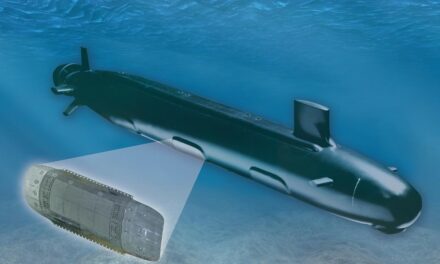We support our Publishers and Content Creators. You can view this story on their website by CLICKING HERE.
Attention is focused on Iran after its massive drone and missile attack against Israel on April 13, and Israel’s subsequent limited strike inside Iran. But lost in this exchange, and one reason that Israel’s response might have been narrow, is that it still has a threat closer to home to finish dealing with: Hamas.
Six months after its barbaric attack, Israel has the terrorist group cornered in Rafah and is preparing a ground incursion into the city. The United States, however, is urging Israel to call off its Rafah operation. But to prevent another October 7, eliminate an Iranian proxy right on its border, and free Gazans who have lived under Hamas’s boot for two decades, an Israeli ground operation is absolutely critical.
Over months of intense fighting, the IDF has destroyed 18 of Hamas’s 24 battalions, each composed of some 1,500 fighters, starting in the north of the Strip and grinding their way south. Now, the remaining strength of Hamas—4 battalions worth—presumably including the majority of Hamas’s senior leadership and the hostages they abducted, is holed up in Rafah. Israel has planned a ground operation to clear this last terrorist stronghold.
The United States has expressed reservations about this plan not on strategic grounds but humanitarian ones. Biden administration officials previously supported Israel’s goal of eliminating Hamas as a military force but they have voiced concerns about the potential humanitarian costs of a ground maneuver into Rafah. More recently, President Biden has called for an “immediate ceasefire.”
As Gazan civilians have fled other parts of the Strip ahead of IDF operations over one million of them have coalesced on Rafah. While these civilians remain in Rafah, U.S. officials believe, an offensive into the city cannot be safely conducted. Yet, they also seem convinced that the civilians have nowhere else to go, therefore concluding that no operation into Rafah is possible and Israel should pursue alternate means to finish off Hamas. Although U.S. and Israel officials have discussed possible alternatives, no one has publicly said what they might be.
That is likely because there is no strategically sound alternative for dismantling Hamas other than a ground incursion into Rafah. And over the past five months of fighting in Gaza, the IDF has proven that it can execute such an operation effectively, efficiently, legally, and while taking due care to get civilians out of harm’s way.
Leaving Hamas in Rafah is simply not an option. The U.S. Marine Corps considered, and rejected, a siege of Fallujah in 2004, choosing instead to enter the city, despite knowing that civilian casualties would be significant, because they recognized that insurgent units would hold out otherwise. Nor did the United States stop its fight against ISIS once it had pushed back the terrorist group to Raqqa or abandon its hunt for Osama bin Laden once the Taliban was toppled. Neither should Israel stop when it is close to eliminating its adversary.
Israel must conquer Rafah to destroy Hamas, free Israeli hostages, and ensure that Hamas will never threaten Israel again. Hamas’s survival would represent a victory not just for the terrorist group but for its Iranian sponsor, and thus a defeat for America and its Arab allies. This will not bring peace, but more only embolden Iran and its proxies to shed more blood. It will consign Gazan Palestinians to continued oppression. Hence Israeli determination, across its political spectrum, to enter Rafah and finish off Hamas.
Nor would a decapitation strategy targeting only Hamas leadership in Rafah be sufficient to accomplish Israel’s war goals. While the IDF has been able to eliminate a significant number of Hamas’s brigade commanders and other operational leaders in Gaza, and some more senior Hamas leaders outside of Gaza, it has only struck one senior Hamas commander, and none of the most wanted top leaders, inside of Gaza in the course of six months of war. That is likely because of the intelligence challenge—even for a force as sophisticated as the IDF—of locating individuals hiding and moving underground, using only hard-wired communications.
Executing decapitation strikes is further complicated by the likelihood that Hamas leaders have surrounded themselves in their subterranean hideouts with Israeli hostages. By pushing Israel to adopt this option, the United States would force its partner to choose between defeating its adversaries and bringing home its citizens, many of whom are also Americans—an untenable choice and a brutal position for an administration that claims its concern is avoiding civilian harm.
Moreover, even if Israel could find and fix just Hamas’s leaders without killing hostages along with them, this approach would leave more than 6,000 Hamas terrorists standing. As demonstrated recently by the reconstitution of a force of more than 1,000 terrorists at al Shifa hospital, Hamas fighters who are left on the battlefield will not simply lay down their weapons. They will reform into a guerrilla force, continue to exploit civilian infrastructure, and plan further attacks. The threat to Israel, Gazans, and the United States will not end until Hamas is neutralized—all of it, not just its leaders.
This leaves a ground maneuver into Rafah as the best and only option for achieving the strategic objectives that Israel and the United States share. And just as Israel was able to effectively rout Hamas from Gaza City and Khan Younis, while taking precautions to protect civilians, it can do the same in Rafah.
The reason that there are so many civilians in Rafah now is due to notifications that the IDF provided—through leaflets, texts, phone calls, and social media posts—telling Gazans to get out of the way of impending operations. Moreover, the IDF provided protection for evacuating Gazans against Hamas’s efforts to kill those that tried to leave. That Israel has been publicly talking about its plan to go into Rafah—thereby giving up any operational advantage of surprise—and deferred any operation during the month of Ramadan, is yet further testament to its determination to maneuver against Hamas’s last stronghold as humanely as possible in such a complex war.
There is no viable alternative to Israel’s planned operation into Rafah. Eliminating Hamas will be a brutal operation with heavy casualties and unavoidable collateral damage, but it is also a necessary step on the path to a better world. Israel deserves our support.
About the Authors
Vice Admiral Michael Connor, USN (ret.) is the former Commander of United States Submarine Forces. Lieutenant General Michael Fiel, USAF (ret.) previously served as the Commander of Air Force Special Operations Command. Lieutenant General Richard Mills, USMC (ret.) served as Deputy Commandant for Combat Development and Integration, Commander, Regional Command Southwest in Afghanistan, and Commander of the First Marine Division. They participated in the Jewish Institute for National Security’s Generals and Admiral Program in 2018, 2016, and 2019, respectively.

 Conservative
Conservative  Search
Search Trending
Trending Current News
Current News 





